The back is a key area to target for anyone looking to improve their overall strength and build a more muscular physique. While there are many exercises that can help target the back, few are as effective as Rack Pulls.
Rack Pulls are a compound exercise that utilizes multiple muscle groups, including the back, glutes, hamstrings, and traps. By incorporating Rack Pulls into your workout routine, you can build strength, increase power, and reduce the risk of injury.
In this article, we will provide step-by-step instructions on how to perform Rack Pulls, including tips on proper form and technique. Whether you’re a seasoned weightlifter or just starting out, this guide will provide you with the information you need to get the most out of this effective exercise. From selecting the right weight to performing the exercise correctly, we’ll cover everything you need to know to get started. So, if you’re looking for an effective exercise for your back, read on and discover the benefits of Rack Pulls.
Rack Pulls are an excellent way to improve your pulling strength while also strengthening your back and hips. You’re also working on improving your deadlift technique!
What Are Rack Pulls and How Do You Use Them?
Rack pulls are a version of the standard deadlift that involves pulling. Because the weight is raised from knee height rather than from the ground, the range of motion of a rack pull is lower than that of a deadlift. Many people refer to this exercise as a half-deadlift as result of this.
A rack pull is a complex action in which many joints and muscle groups are recruited, and the exercise promotes muscle growth and strength. While this is a workout in and of itself, one of its primary purposes is to assist lifters in improving their deadlift technique and lifting bigger weights while executing a pulling exercise.
If you’re interested in learning more about the advantages of rack pulls, why you should perform them, and how they vary from a standard deadlift, keep reading. Check out our workout demonstration to learn how to execute rack pulls correctly.
But first, take a look at our nutrition courses and Personal Trainer certifications to see how you can turn your passion for fitness into a profession.
What is a rack pull, and how do you execute one?

- Place the arms of the rack at a height that is about knee height. Include your barbell in the mix.
- Make sure your feet are wide apart.
- Return your hips to their original position.
- Take an overhand hold on the barbell with your hands approximately shoulder-width apart.
- Ensure your core is engaged, your back is flat, and your neck is aligned with the rest of your spine.
- Raise the bar by extending your knees and pressing your hips forward.
- Hold at the peak for a few seconds, then return to the beginning position.
Is it possible to get a good deal with rack pulls?
The efficiency of exercise is determined by the purpose for which it is performed.
If you’re utilizing a rack pull to build up to a deadlift, practice your deadlift technique and the section of the lift that you find the most difficult, or enhance the strength in your lower back, they’re an excellent exercise to use.
Rack pulls may not be one of the key exercises you’ll include in your regimen if you’re seeking to build full-body strength with just a few exercises.
When it comes to deadlifts and rack pulls, what is the difference?
The range of motion for rack pulls is substantially less than for deadlifts. The movements are quite similar. However, with a deadlift, you’re lifting the barbell from the ground, while in a rack pull, you’re pulling it off the rack.
The rack pull concentrates on the muscles of the lower back rather than the hamstrings.
Rack pulls allow you to lift more weight than deadlifts since there is less distance to cover.
They’re also a terrific progression if you want to work on your hip-hinging action, which is required for a deadlift.
When it comes to rack pulls, how high should they be set?
The height at which you place the bar for a rack pull has three settings.
You’ll activate your hamstrings and glutes a lot more if you’re lower than knee height. If you’re building up to or practicing deadlifts, this is a terrific exercise to try.

The attention is mainly on the muscles in the lower back when the height is higher than knee height. The range of motion is significantly reduced, and you’ll be able to lift a bit more weight here.
You can do a little bit of both by setting the bar at knee height. This is a good compromise.
A Hussle Pass is a great way to improve your rack pulls. It allows you to utilize a variety of gyms at any one moment. As a result, you have complete flexibility in terms of when and where you exercise. Oh, and there isn’t a contract either. Allow yourself to grow freely at your speed.
Advantages of Rack Pulls
#1 Rack Pull Back Bulking Benefits

The rack will help you build up your back muscles while you’re training. Your lower back, traps, and upper back muscles are all worked out during this action. Regular deadlifts, on the other hand, target a far larger range of muscles. The muscular growth from a rack pull vs a deadlift is more important since it focuses more on the muscles in your back and allows you to lift more weight to do so.
#2 You’ll have less stress on your back.

When compared to the action of a complete deadlift, lifting the barbell from any of the three height choices on the power rack places less stress on the lumbar muscles and spine. Rack pulls are an excellent way to strengthen your back muscles without putting them under too much stress.
The back muscles will be less exhausted following a regimen that includes rack pulls vs one that includes a set of deadlifts due to the lower tension on your back. Because you’ll be able to do more sets of rack pulls more regularly, you’ll be able to gain muscle with less muscle exhaustion.
The trap bar deadlift is another deadlift variant that relieves lower-back stress. Check out our guide to the trap bar deadlift here if you’re recuperating from a lower back injury or want to be as healthy as possible.
#3 Rack-pulls Deadlift benefits
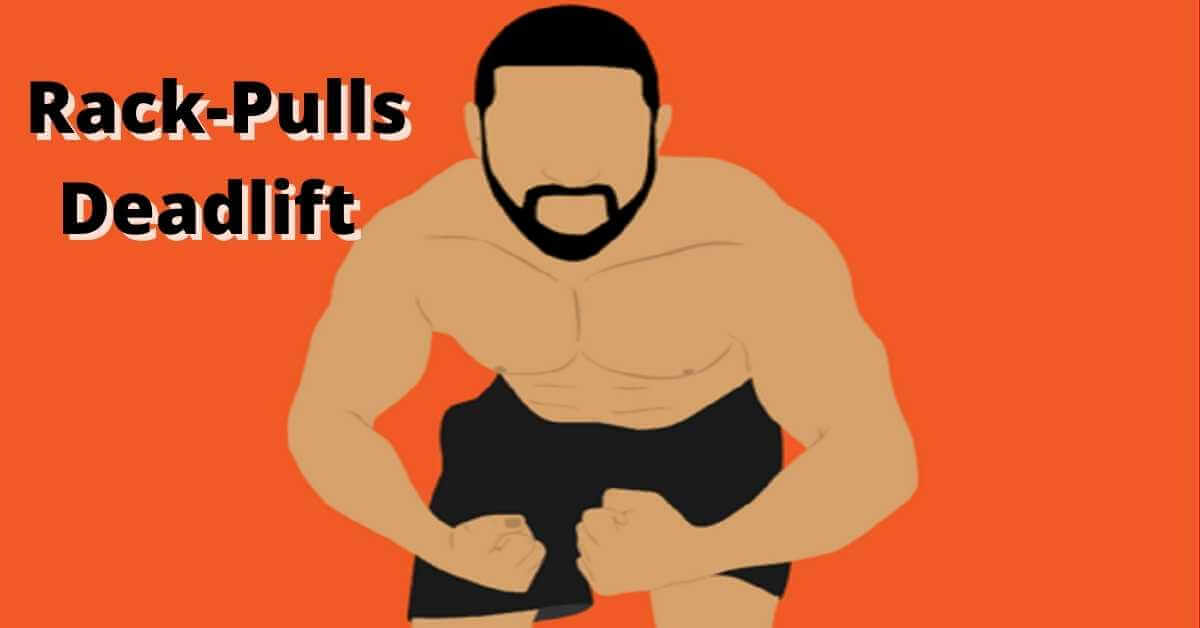
Use rack pulls to work on your deadlift to improve your shape. The rack pull’s motion range is simply the top section of the deadlift, so it bypasses the toughest portion of the exercise but still enables you to concentrate on the area of the shape that many people find hard to perfect.
Another advantage of rack pulls is that they enhance how much weight you can raise dead. All the rack pulls muscles exercised are also worked in the deadlift, working via rack pulls, making them stronger when recruited for the deadlift.
This has additional advantages since the more deadlifting you (correctly) enjoy, the more perks of deadlifting. And though we’ve said that rack pulls aren’t an effective method to prepare for a powerlifting competition, being able to deadlift more with rack pulls suggests they may earn a place in your powerlifting preparation.
#4 Rack Pulls Grip-strength benefits

Rack pulls are a fantastic workout for building grip strength since you can lift more weight with them. Another manner rack pulls benefits from deadlifts and pulling workouts like pull-ups. Grip strength is typically disregarded until individuals start serious about powerlifting, and then they realise that grip strength is a significant element of lifting. With a stronger grip, you can lift larger weights, lift more, and know the rest.
#5 Isolate Various Muscles

When describing the muscles used by rack pulls, we highlighted that the key muscles emphasised by the activity alter depending on the height at which the pull begins, for example, beginning a rack pull above the knee vs beginning a rack pull below the knee height.
The most popular rack pull form is to start above the knee since this height places the greatest stress on your back muscles. On the other hand, the rack pulls below the knee, work the glutes, quadriceps, and hamstrings more than the greater varieties.
Rack pulls are perfect for working on your lower back, even though they stimulate a wide variety of muscles. So, although the extra advantage of engaging certain lower body muscles is wonderful, utilising this exercise instead of a more suitable activity like a squat is a waste of time. In reality, no one form of lift can provide all of the solutions. Rack pulls and squats are both excellent exercises, so combine the two, as well as deadlifts and bench presses.
The Most Common Mistakes

This variant, like the standard deadlift, encourages several mistakes. Here are some of the most typical mistakes that people make during this activity and how to prevent and remedy them.
Forward thrusting of the hips
Rack pulls and deadlifts are primarily used to strengthen the lower back, but they may also strengthen the whole lower body. It’s tempting to push your hips forward at the peak further to push the glutes, hamstrings, and quads since they may build these muscles. This, however, alters the nature of the workout and may result in you throwing out your back. The movement should be smooth and controlled at all times. The danger of damage rises when you thrust your hips forward to push your lower body even more.
Excessive Weight Lifting
Lifting more weight than you can easily bear increases your chance of injury or strain, just like any other activity. You may be able to load more weight than you would with a typical deadlift since the range of motion is limited. If you’re new to exercising, though, you should proceed with care and gradually raise your weight. Before raising the weight, concentrate on developing a faultless technique.
Kneeling with the Knees Angled
Adopting a sumo posture is one variant of the deadlift. When your feet are pointing outward, your knees bend at a 45-degree angle. Because it puts strain on the knee joints and hips, this is not a beginner-friendly activity. It may also throw you off balance and cause the weight to be distributed unevenly. Keep your feet pointing forward and your knees not angled outward to prevent uncomfortably high pressure on the knees.
Possessing Poor Posture
Proper posture is essential for properly completing this workout. Maintain a straight back, shoulders back, and feet shoulder-width apart at all times. Poor posture might lead you to do the exercise improperly, which may harm your lower back and create tension.
Muscles worked with Rack Pulls.
The muscles used in the rack pull are quite similar to those used in the deadlift. Keep reading because we’re going to go into a more in-depth discussion of rack pulls vs deadlifts.
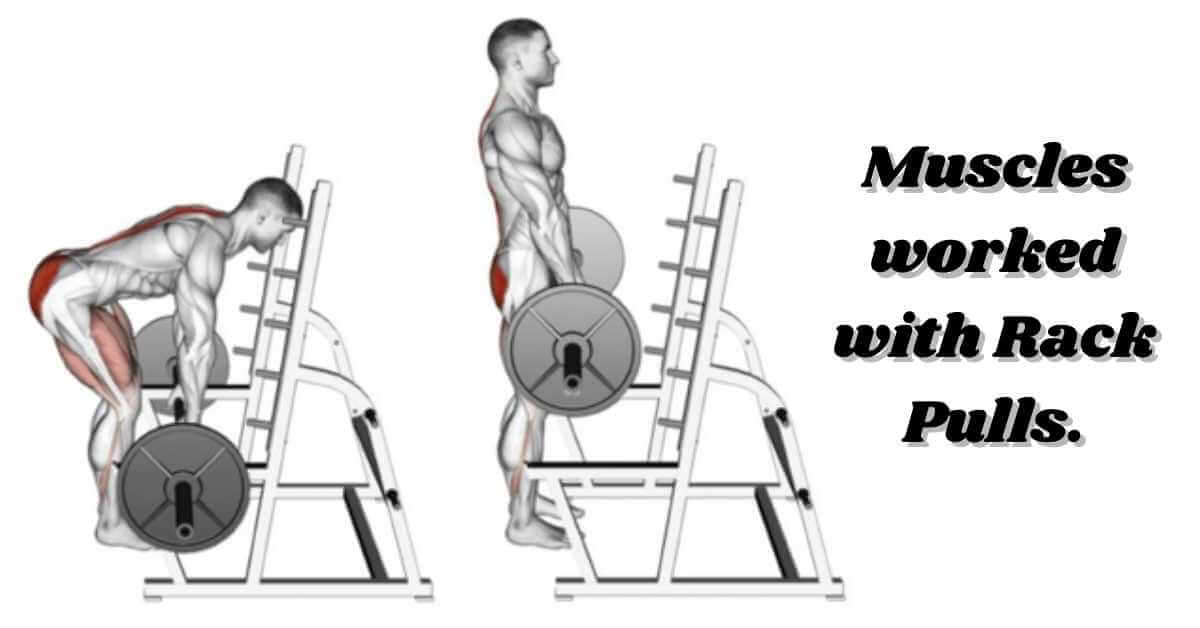
Returning to the muscles targeted by the rack pull, the lower back muscles, notably the erector spinae, are the primary beneficiaries of this exercise. Rack pulls use the glutes, quadriceps, hamstrings, traps, and upper back muscles.
The key muscles activated by the rack pull are influenced by the height at which you begin the activity, as previously stated. Stick to rack pulls above the knee and gradually raise the weight rather than reducing the height of the barbell on the power rack to properly target the muscles in your back. Go for rack pulls that start below the knee to better activate the glutes and hamstrings with this activity.
Deadlifts Against Rack Pulls
Deadlifts are a tried-and-true but really basic workout. Along with squats and the bench press, they’re one of the main three exercises. The deadlift is a multi-joint exercise that engages all of the muscles in the posterior chain. Rack pulls, or any other workout for that matter, do not train as many muscles as deadlifts do. If you could only do one exercise for the rest of your life (or, more likely, if you’re simply short on time), the deadlift would be a good choice.
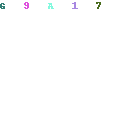
Deadlifts, unlike rack pulls, are included in competitive powerlifting. So, in addition to the more general advantages, competitive lifters will find that training deadlifts is a lot more valuable, if not vital.
So, why perform a rack pull vs deadlift comparison in the first place? When it comes to deciding which workout is the greatest, there isn’t a complete landslide. There are a few additional points of comparison and contrast to thinking about.
The barbell begins with a dead momentum in both workouts. One of the key reasons both of these exercises have significant advantages for growing muscular strength and growth is the dead halt at the start of each rep.
The amount of weight that can be controlled for each lift is a distinction between the rack pull and the deadlift. When opposed to lifting from the floor, lifting from the rack allows you to handle greater weight. When you lift the greater weight, the advantages of rack pulls become more substantial in terms of building back muscular strength and hypertrophy.
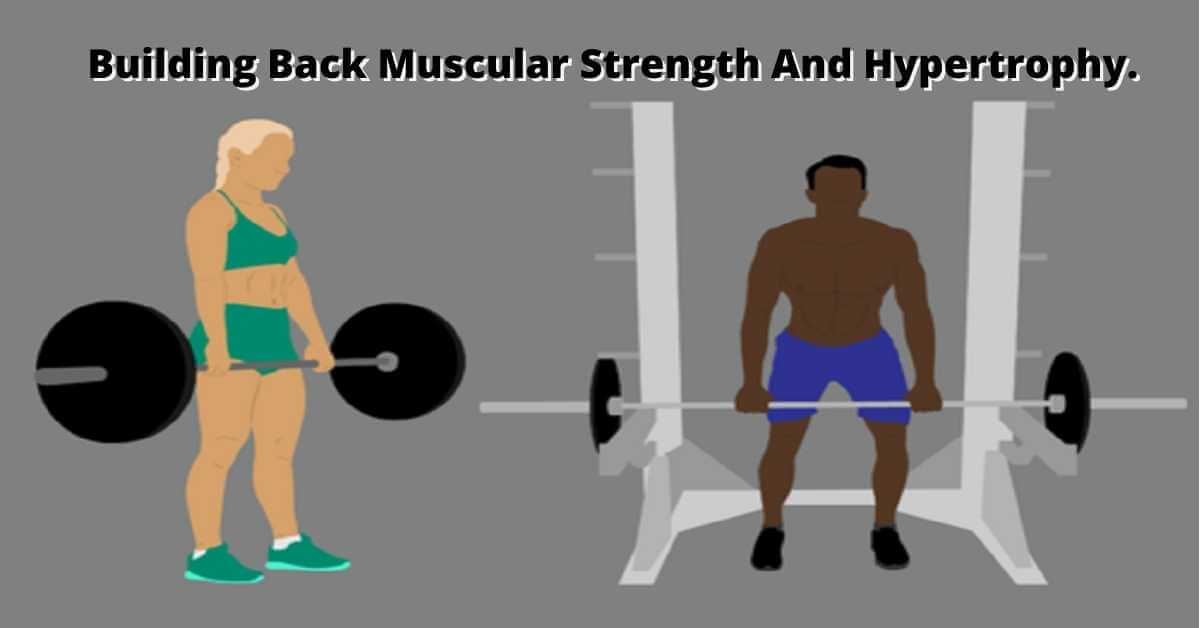
Rack Pulls Vs Deadlift Comparison
The range of motion of the exercises is the most noticeable difference in the rack pulls vs deadlift comparison. The top of a deadlift action is similar to the top of a rack pull action, except the standard deadlift begins on the floor, while rack pulls begin on, well, a rack. Starting the activity on a rack shortens the range of motion of the rack pull; in essence, the range of motion of a rack pull is the upper half of a standard deadlift; hence, partial deadlifts are popular.
Even though the broader range of motion restricts the amount of weight you can lift, the deadlift is superior for increasing functional strength to the partial deadlift version.
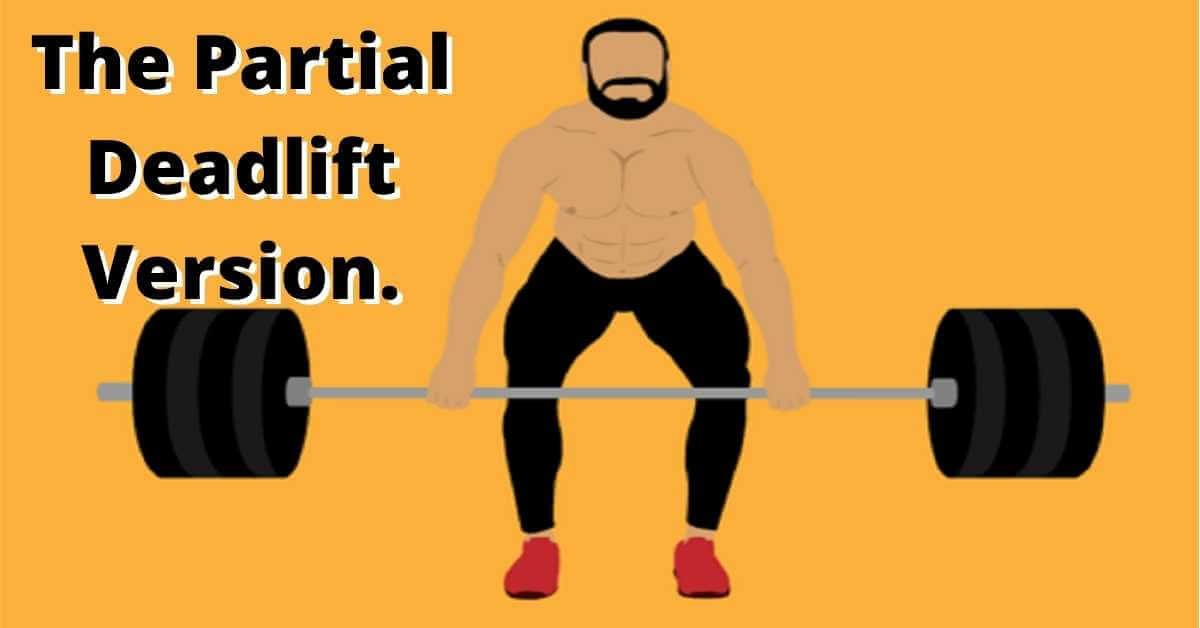
Deadlifts are undoubtedly the ideal method to train the deadlift action, but rack pulls are a wonderful technique to fix mistakes in the deadlift technique. You can start a rack pull from various heights to train various portions of the deadlift action, but if you want to become better at deadlifts in general and improve the amount of weight you can deadlift, then executing a deadlift is your best chance.
If you’re not a competitive powerlifter and want to increase strength and muscle mass in a more general way, rotating rack pulls and deadlifts into your exercise will offer you the best of both worlds.
Is it true that rack pulls are more effective than deadlifts?
Rack pulls are not superior to deadlifts in terms of strength. Neither is fundamentally superior to the other since your training objectives will determine it. On the other hand, the deadlift is a more complex action that uses more musculature in the thigh, hip, and back muscles. Furthermore, compared to the rack pull, the deadlift will have more carryover to other sports actions.
conclusion
In conclusion, Rack Pulls are a highly effective exercise for targeting the back and improving overall strength. When performed correctly, Rack Pulls can help build muscle, increase power, and reduce the risk of injury. By incorporating Rack Pulls into your weightlifting routine, you can take your back training to the next level and achieve your strength training goals.
It’s important to keep in mind proper form and technique when performing Rack Pulls, and to start with a lighter weight and gradually increase as you build strength. Additionally, it’s a good idea to consult with a trainer or coach to ensure you are performing the exercise correctly and to get personalized advice on how to incorporate Rack Pulls into your workout routine.
Whether you’re a seasoned weightlifter or just starting out, Rack Pulls can be a highly effective exercise for targeting the back and building strength. So, if you’re looking for a powerful and effective exercise for your back, give Rack Pulls a try and see the results for yourself.
Frequently Asked Questions
Should I pull up or down the knee?
You can execute rack pulls from practically anywhere, but most rack pulls are done from about below the knee to mid-shin. That stated, depending on sticking points or technical issues, this may be tailored.
Is it true that rack pulls are detrimental for my lower back?
If you have a lower back problem, you should see your doctor before lifting or adding rack pulls. If you’ve been cleared to lift and want to go back to pulling from the floor, employing rack pulls at a lower pulling height will help you strengthen your back, glutes, and hamstrings while also improving your pulling technique.
Is it possible to train too hard while doing rack pulls?
Yes, you can lift too much weight, particularly if your form deteriorates due to doing so. Individuals often employ the rack pull to raise as much weight as possible, which may overwork the body and increase training stress, particularly if they simultaneously practice deadlifts and other back exercises. However, you may utilize these exercises to build strength and muscle growth by using large weights, frequently heavier than your deadlift. Make sure to keep the preceding suggestions in mind.